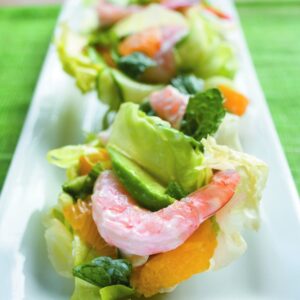
Oats are one of the healthiest grains around and are an excellent source of a range of nutrients that can protect your heart and gut health while helping you maintain healthy blood sugar levels, a healthy weight, and much more. Warm your hands around a steaming bowl of creamy oats or serve them chilled as a Bircher muesli or in a delicious smoothie … they’re satisfying and super nutritious. Dietitian Melissa Meier explains why oats are so good for you.
There is nothing more satisfying than a warm bowl of porridge on a chilly morning. But did you know this quintessential morning meal belongs in nature’s ‘superfood’ category?
Why the humble oat is so healthy
Oats are nutritional powerhouses packed with real goodness. These whole grains are a great source of fibre for a healthy digestive system, protein for building and maintaining muscle, as well as quality carbohydrates to keep you feeling full.
The not-so-humble oat contains a special type of fibre called beta-glucan, which can help to lower cholesterol — so they’ll keep your heart happy too, as will their heart-friendly fats.
The B vitamins found in oats help to unlock the energy in your food, while oats’ vitamin E contains antioxidant properties.
Plus their iron delivers oxygen to your muscles. In fact, oats are nothing short of a nutritional powerhouse!
Calci-YUM!
You can’t make a delightful bowl of hot creamy porridge without using milk to cook it.
Not only does milk help provide that much-loved creamy texture, it packs a nutritional punch. Loaded with muscle-building protein and bone-strengthening calcium, milk is a nutritious addition to any diet.
If you’re not using cow’s milk, be sure that you choose a calcium-fortified milk alternative.
How to make your porridge delicious and even more nutritious
Use toppings to boost the nutritional value and flavour of your porridge. Adding nuts and seeds will supply a satisfying crunch to your morning bowl, along with healthy fats and gut-friendly fibre.
Fresh fruit is a great way to lend sweetness without added sugar, with immune-boosting vitamins and minerals ideal for the flu season too. Top with reduced-fat yoghurt for extra calcium.
Different types of oats
Steel-cut oats are the least refined variety. They’re dense and chewy as a result of passing uncooked through sharp steel blades that cut their kernels into thin slices to help them retain more fibre and protein. They take 15–20 minutes to cook.
Quick oats are cut into finer pieces before they are rolled, so take only minutes to cook.
The Glycaemic Index of quick oats is a little higher than the steel-cut and rolled varieties, so they might not keep you feeling full for as long.
Rolled oats have been steamed and rolled thin, making them a lot quicker to cook than steel-cut oats.
Flavoured oats usually come in convenient sachets, often with added sugar, so choose unsweetened ones.
4 flavour pairings that make oats taste great
- Apple and cinnamon
- Banana and peanut butter
- Pumpkin and nutmeg
- Pear and pecan.
Article sources and references
- A. Kristek et al. The gut microbiota and cardiovascular health benefits: A focus on wholegrain oats. British Nutrition Foundationhttps://onlinelibrary.wiley.com/doi/full/10.1111/nbu.12354
- Prasad Rasane et al. Nutritional advantages of oats and opportunities for its processing as value added foods - a review. J Food Sci Technol. 2015 Feb; 52(2): 662–675.https://www.ncbi.nlm.nih.gov/pmc/articles/PMC4325078/
- Candida J. Rebello, Dietary fiber and satiety: the effects of oats on satiety. Nutr Rev. 2016 Feb; 74(2): 131–147. Published online 2015 Dec 31. doi: 10.1093/nutrit/nuv063https://www.ncbi.nlm.nih.gov/pmc/articles/PMC4757923/
www.healthyfood.com













